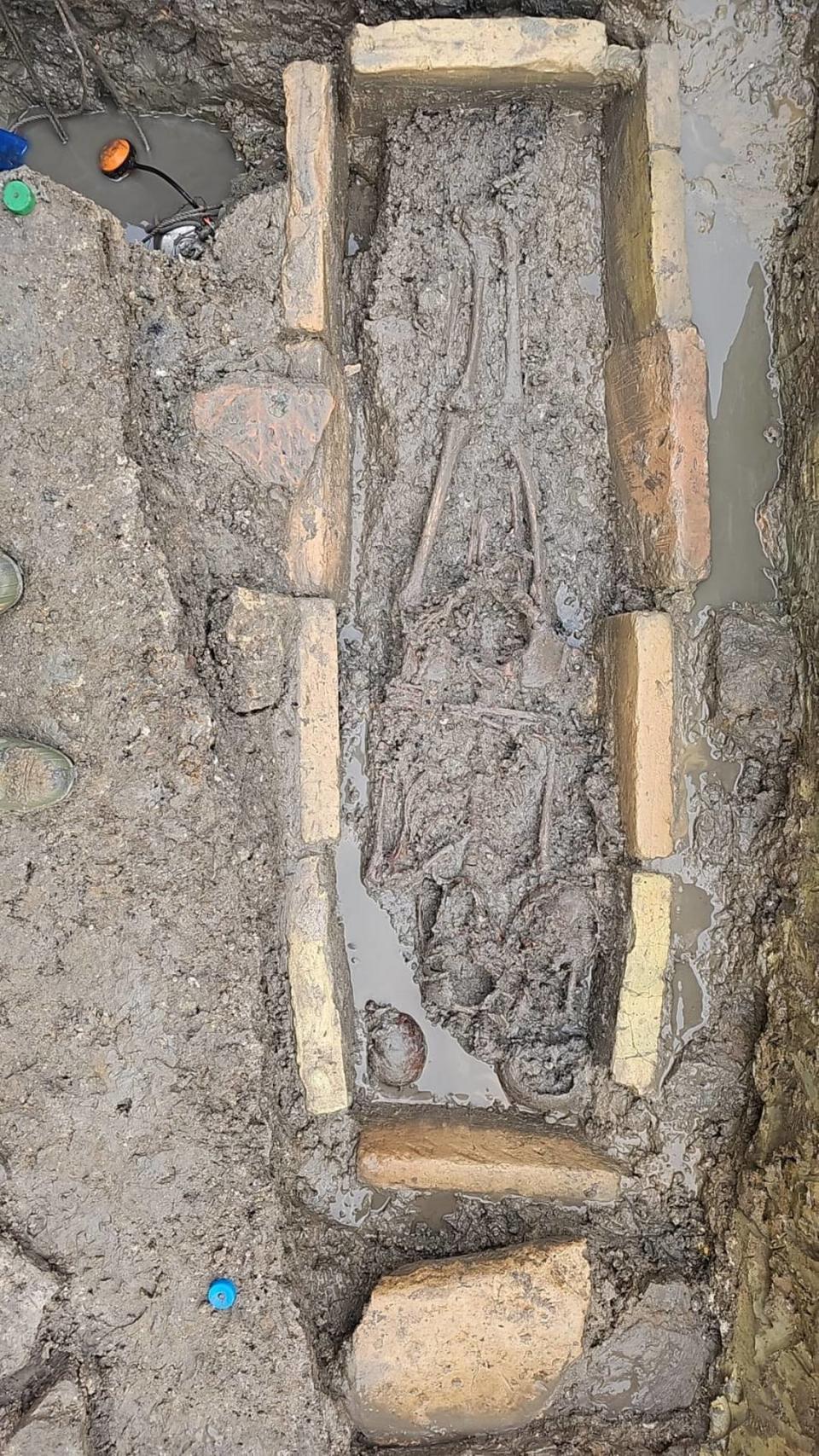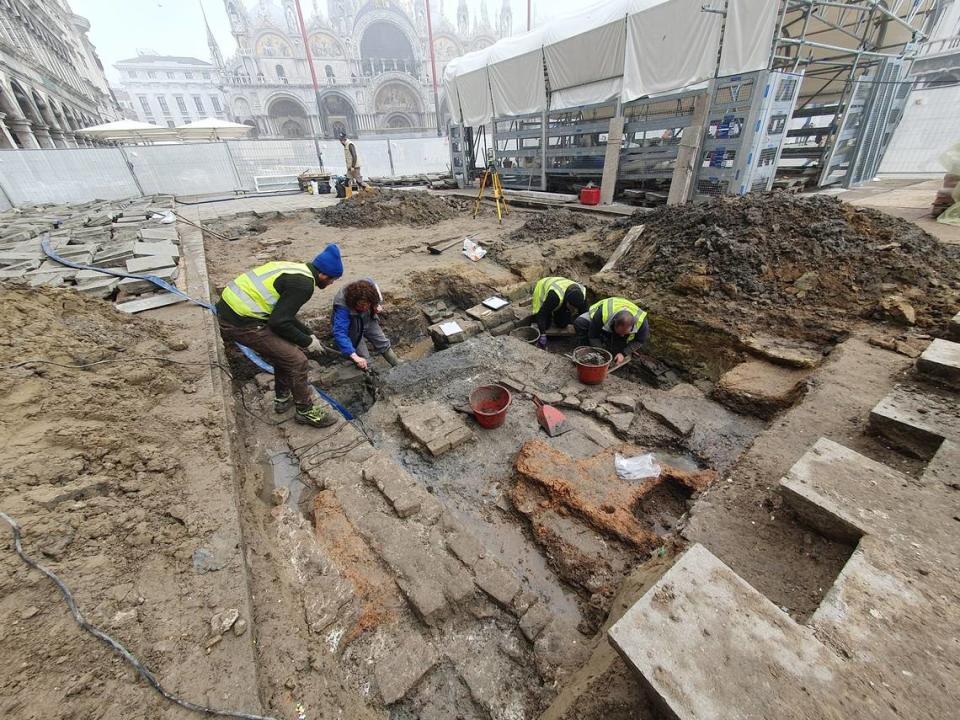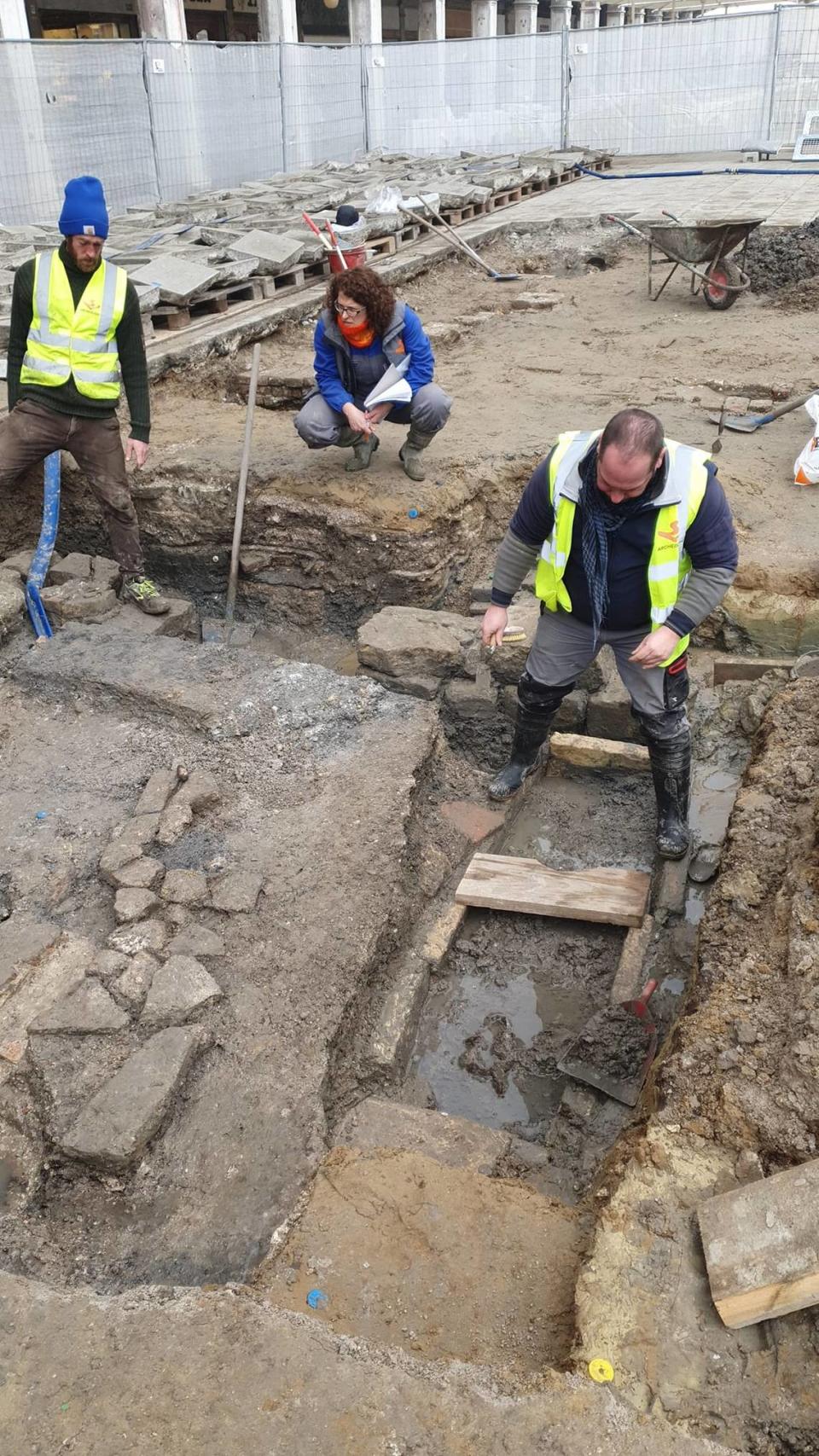Medieval church — lost for centuries — reemerges at iconic site in Venice, photos show
Reaching Venice’s iconic Piazza San Marco means crossing several canals and not getting lost along the narrow cobblestone streets. Turning that final corner and entering the wide, tiled square feels like a reward.
The plaza oozes elegance, and the centerpiece is obviously the tower and neighboring 1,000-year-old basilica. Tourists point their cameras that way. Cafe chairs angle that direction.
But underneath the plaza sits a medieval secret — one that archaeologists recently rediscovered.
Archaeologists in Italy began excavating the center of the Piazza San Marco to restore the well-trodden paving stones, the Superintendency of Archaeology, Fine Arts and Landscape for the Municipality of Venice and the Lagoon said in a Feb. 19 Facebook post.
Hidden below, they found the first clue: a rectangular brick tomb filled with skeletons. A photo shows the muddy burial.
The tomb dated to the seventh or eighth century, when people were commonly buried inside of or next to a church, Sara Bini, the excavation’s lead archaeologist, told the Italian newspaper Rai News.

Uncover more archaeological finds
What are we learning about the past? Here are three of our most eye-catching archaeology stories from the past week.
→ 'Unusual' stones on seafloor turn out to be 'thrilling' 11,000-year-old trap in Germany
→ Tractor driver hits stone — and opens 1,700-year-old Roman tomb in Bulgaria. See it
→3,500-year-old shipwreck — one of world's oldest — sank carrying items in hot demand
Seven people were buried together — a roughly 8-year-old child, a woman and five other adults, Bini told another Italian newspaper Il Gazzettino. The stone construction of the tomb suggests the deceased were important people.
Near the 1,200-year-old tomb, excavations revealed a second clue: the ruins of some walls and a floor, officials said.
Archaeologists identified the ruins as the lost medieval church of San Geminiano.

Based on archive sources, archaeologists knew that the church of San Geminiano was built somewhere in the Piazza San Marco in early medieval times, demolished and relocated twice then permanently destroyed in the early 1800s, the Italian newspaper Corriere del Veneto reported.
The exact location of the original church had been lost for centuries — but not anymore, archaeologists said.

The excavation at the plaza has finished, and the paving stones will be put back in place, officials wrote in a Facebook comment. Bini told Il Gazzettino that the newfound remains will be further analyzed.
Venice is along the northwestern coast of Italy and about 250 miles north of Rome.
Google Translate was used to translate the Facebook post from the Superintendency of Archaeology, Fine Arts and Landscape for the Municipality of Venice and the Lagoon and articles from Rai News, Il Gazzettino and Corriere del Veneto.
Abandoned 4,700-year-old plaza — unlike any other — unearthed on mountaintop in Peru
Ancient DNA reveals Down syndrome in 5,000-year-old remains, study says. It’s a first
Mass graves of Black Death victims found in Germany. See the gruesome ‘surprise’

